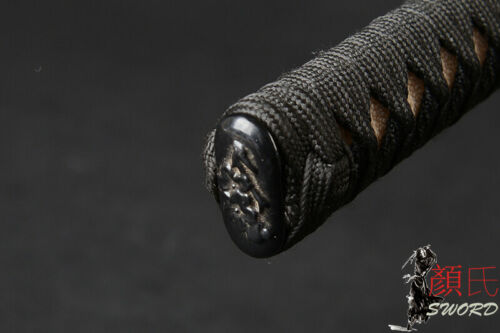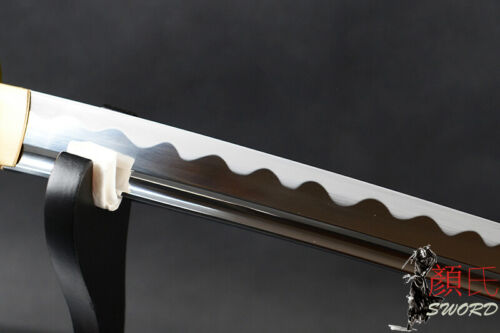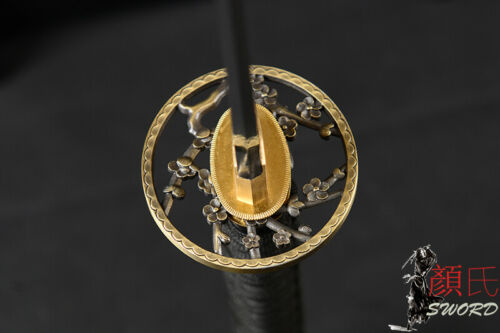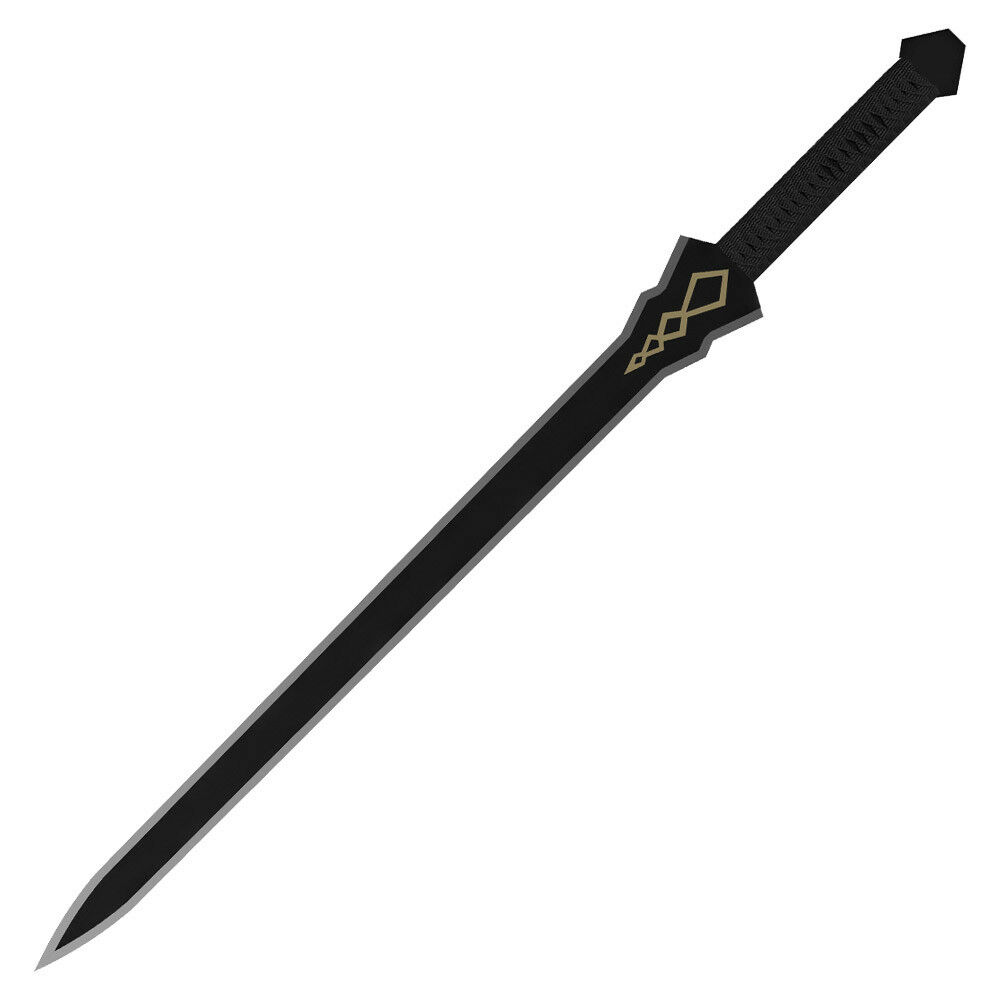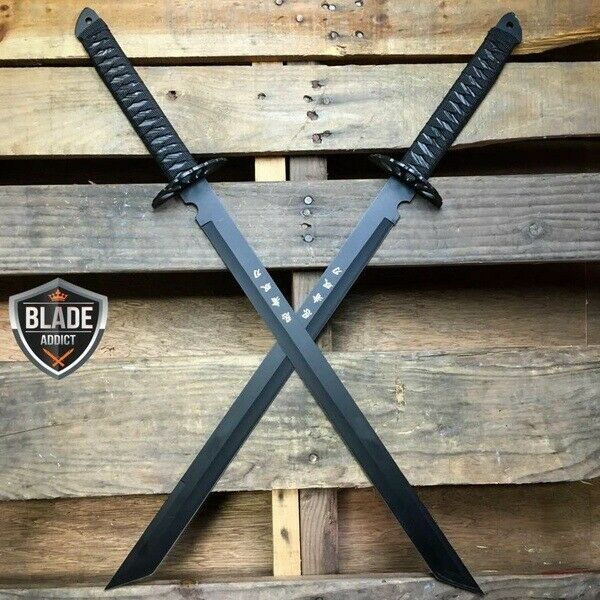-40%
Japanese Samurai Katana Sword manganese Steel Sharp Full Tang Wintersweet Tsuba
$ 85.14
- Description
- Size Guide
Description
Store categorySign Up Now !
You may also like
Japanese Samurai Katana Sword manganese Steel Sharp Full Tang Wintersweet Tsuba
Product Description
Katana
(刀, "sword"): A general term for the traditional sword with a curved blade longer than 60 cm (there is no upper length limit but generally they are shorter than 80 cm), worn with the edge upwards in the sash. Developed from the uchigatana and the sword of the samurai class of the Edo period (1600s to late 19th century).
Samurai
Katana
as a weapon is famous for its beautiful shape. They are used as art collection and the symbol of samurai soul. Our sword allows you to make a collection or to send to friends as a present.
This
katana
can be taken apart fully at anytime for maintenance purposes, you can disassemble the sword by taking out the pegs from the handle.
BASIC DATA
OVERALL LENGTH:
103 cm / 40.6'
BLADE LENGTH:
70 cm / 27.6'
TSUKA LENGTH:
26 cm / 10.24'
BLADE WIDTH:
3.2 cm / 1.26'
BLADE THICKNESS:
0.7 cm / 0.28'
BLADE HRC:
54
BLADE CRAFT
BLADE CRAFT:
fully hand forged, hand polished, water quenching
BLADE MATERIAL:
Manganese Steel
BLADE SHAPE:
Shinogidukuri
NAKAGO:
full tang
BO-HI:
long groove
HAMON: wavy hamon, made by machine
MEKUGI:
2 bamboo pegs
SHARPNESS:
★★★★☆
MIRROR EFFECT:
★★★★☆
MOUNTINGS
TSUKA(HANDLE):
hard wood core, hineri maki
SAMEGAWA:
genuine white rayskin
TSUKA-ITO:
synthetic silk black Ito
FUCHI / KASHIRA:
plum blossom, zinc alloy
MENUKI: black dragon, zinc alloy
TSUBA(HAND GUARD):
plum blossom, zinc alloy
SEPPA: brass
HABAKi:
brass
SAYA:
Lacquered wooden matt black scabbard, wrapped with black synthetic silk sageo
PACKAGE
1 sword with saya
1 black cotton bag
NOTICE
Sword display holder(stand) is
not
included
Manual measurement error range 1-2 cm
Manganese steel
is one kind of high-strength steel. It is mainly used to absorb impact,squeezing and Physical abrasion. If add 2.5%-3.5% of manganese to steel, the low manganese steel will be made. It is as brittle as glass. However, if add above 13% of manganese to the steel, high manganese steel can be made. It not only has strong rigidity but good toughness. It is used to make helmet, tank armour and bullet of armor-piercing projectile in Military Affairs Field. Manganese steel is made by mixing the soft tin ore and iron ore which contains 60%-70% of manganese then refining, smelting them.
SWORD MOUNTINGS FOR CHOOSING
ENGRAVING SERVICE
HOW TO DISASSEMBLE A JP SWORD
SWORD MAKING PROCESSES
DELIVERY DETAILS & PAYMENT
SWORD MOUNTINGS FOR CHOOSING
If you don't like the color or the style of the mountings, you can choose different ones from the options below. Just tell us your choice before purchase.
TSUBA
The tsuba (鍔, or 鐔) is usually a round (or occasionally squareish) guard at the end of the grip of Japanese swords. They contribute to the balance of the sword and to the protection of the hand. The tsuba was mostly meant to be used to prevent the hand from sliding onto the blade during thrusts as opposed to protecting from an opponent's blade.
TSUBATSUKA-ITO & SAGEO
Tsuka-ito is the wrapping of the tsuka and sageo (下緒 or 下げ緒) is a hanging cord that is passed through the hole in the kurigata (栗形) of a Japanese sword's saya.
SAMEGAWA
Samegawa(鮫皮)is the ray or shark skin wrapping of the tsuka (handle/hilt).
SAYA
The saya is a wooden scabbard for the blade; traditionally done in lacquered wood.
ENGRAVING SERVICE
It is
free
for engraving English words,Chinese characters and Japanese Kanji.
You need pay
additional
for engraving patterns (dragon, lion, etc.) or other logos.
HOW TO DISASSEMBLE A JP SWORD
SWORD MAKING PROCESSES
Forming
Swords can be shaped by a variety of metalworking techniques.The primary techniques are forging and stock removal.
Forging uses heat to bring the material to a malleable state. The material is then hammered to shape, typically using hammer and anvil together with specialized set and fuller tools depending on the particular technique.
Stock removal shapes the sword from prepared stock that is larger in all dimensions than the finished sword by filing, grinding and cutting.
Quenching
After the blade has been shaped, the sword would be quenched. We quench our swords in either water or oil. Water quenching produces a tougher edge which can also be hardened further more using clay. Blades quenched in oil are still considerably hardened and do have superior flexibility compared to a water quenched blade.
The more rapidly a blade cools down, the harder it becomes. Thus, when a hot blade enters the water, the water also gains heat and the blade will cool more gradually. Therefore, the first part of the blade that enters the water will be the hardest. Therefore, the technique of quenching was also very important. If a blade has any flaws from forging (air bubbles, ash), it will break immediately during the quenching process.
Tempering
After quenching, the sword will be quite tough and brittle, with little flexibility. To overcome this, the blade would undergo a tempering process. The blade would be reheated to a certain temperature degree then allowed to cool naturally. The blade would be slightly less tough afterward but have a greater degree of flexibility – the art would be to perfectly balance the blade for toughness, sharpness and flexibility.
Modifying Shape
Finishing
Finishing encompasses polishing, decorating, and crafting and assembling the hilt, guard and sheath.
The swordsmith would be most concerned with the state of the blade itself and possibly decorating the blade and preparing the guards and pommel. Other artisans would likely be involved in the work of fashioning the hilt, sheath and other furniture; and in any fine decoration.
Polishing
When the rough blade is completed, the swordsmith turns the blade over to a polisher, whose job it is to refine the shape of a blade and improve its aesthetic value. The polishing process almost always takes longer than even crafting, and a good polish can greatly improve the beauty of a blade, while a bad one can ruin the best of blades. Early polishers used three types of stone, whereas a modern polisher generally uses seven.On high quality blades, only the back of the blade and the adjacent sides, are polished to a mirror-like surface. To bring out the grain and hamon, the center portion of the blade, and the edge are usually given a matte finish. Microscopic scratches in the surface vary, depending on hardness. Smaller but more numerous scratches in the harder areas reflect light differently from the deeper, longer scratches in the softer areas. The harder metal appears more matte than the softer, and the manner in which it scatters light is less affected by the direction of the lighting.
After the blade is finished it is passed on to a mountings-maker for fashioning the hilt, sheath and other mountings.
DELIVERY DETAILS & PAYMENT
International Buyers – Please Note:
a) Import duties, taxes and charges are not included in the item price or shipping charges. These charges are the buyer’s responsibility.
b) Please check with your country’s customs office to determine what these additional costs will be prior to bidding/buying.
The shipment will be prepared and get shipment as soon as possible when you place the order. The shipping time is different according to the different area.
US:
10-15 days
AU:
8-12 days
Ca:
10-15 days
Others:
25-60 days
It is international shipment, so there are many factors influenced, please let us know if there is any question, we will try our best to make things right for you.
Only
accepted. Paypal is convenient and safe for both of us.
If there is any problem with the payment,you can contact with us at any time.
Feedback




